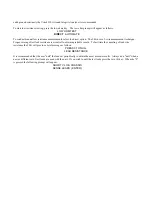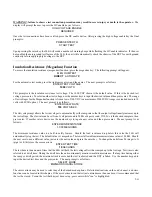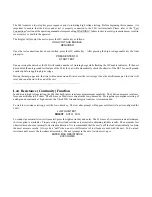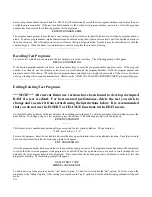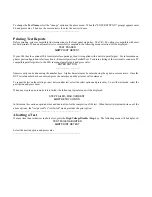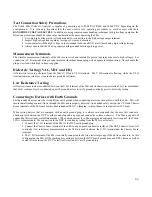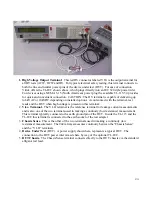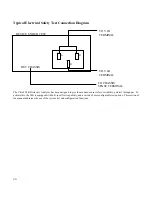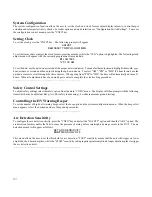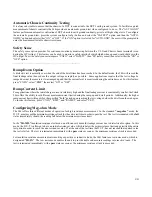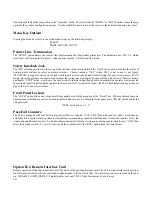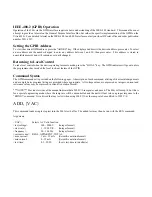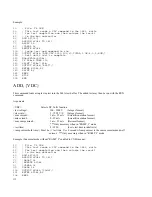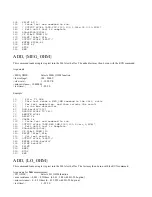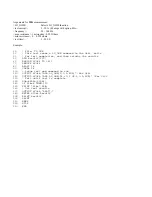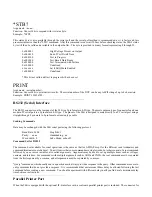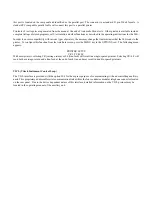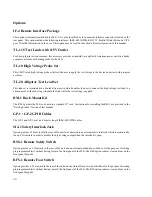
24
1. High Voltage Output Terminal
. This red HV connector labeled V Hi is the output terminal for
all HV tests (ACW, DCW and IR). For typical electrical safety testing, this terminal connects to
both the line and neutral power pins of the device under test (DUT). For ease of connection
Vitrek offers the TL-IEC shown above, which plugs directly into an IEC 320 style power inlet.
For devices using a NEMA 5-15 (North American) power plug the available TL-115-50 provides
for quick and convenient connection. CAUTION: The HV terminal is capable of delivering up
to 8kVAC or 10kVDC depending on installed options. Avoid contact with the terminal, test
leads and the DUT when high voltage is present on this terminal.
2.
V-Lo Terminal.
The V LO terminal is the reference terminal for leakage current measurements
and is also one of the two terminals used in making a continuity (low resistance) measurement.
This terminal typically connects to the earth ground pin of the DUT. Inside the TL-115 and the
TL-IEC this terminal is connected to the earth socket of the test adapter.
3.
Chassis Sense.
This is the other of the two terminals used in making a continuity (low
resistance) measurement. The 944i always measures continuity between the “Chassis Sense”
and the “V LO” terminals.
4.
Device Under Test
(DUT). A power supply shown here, represents a typical DUT. The
connection to the DUT power inlet is made here by way of the optional TL-IEC.
5.
DUT Chassis.
The Chassis Sense terminal connects directly to the DUT chassis via the standard
alligator test lead.


